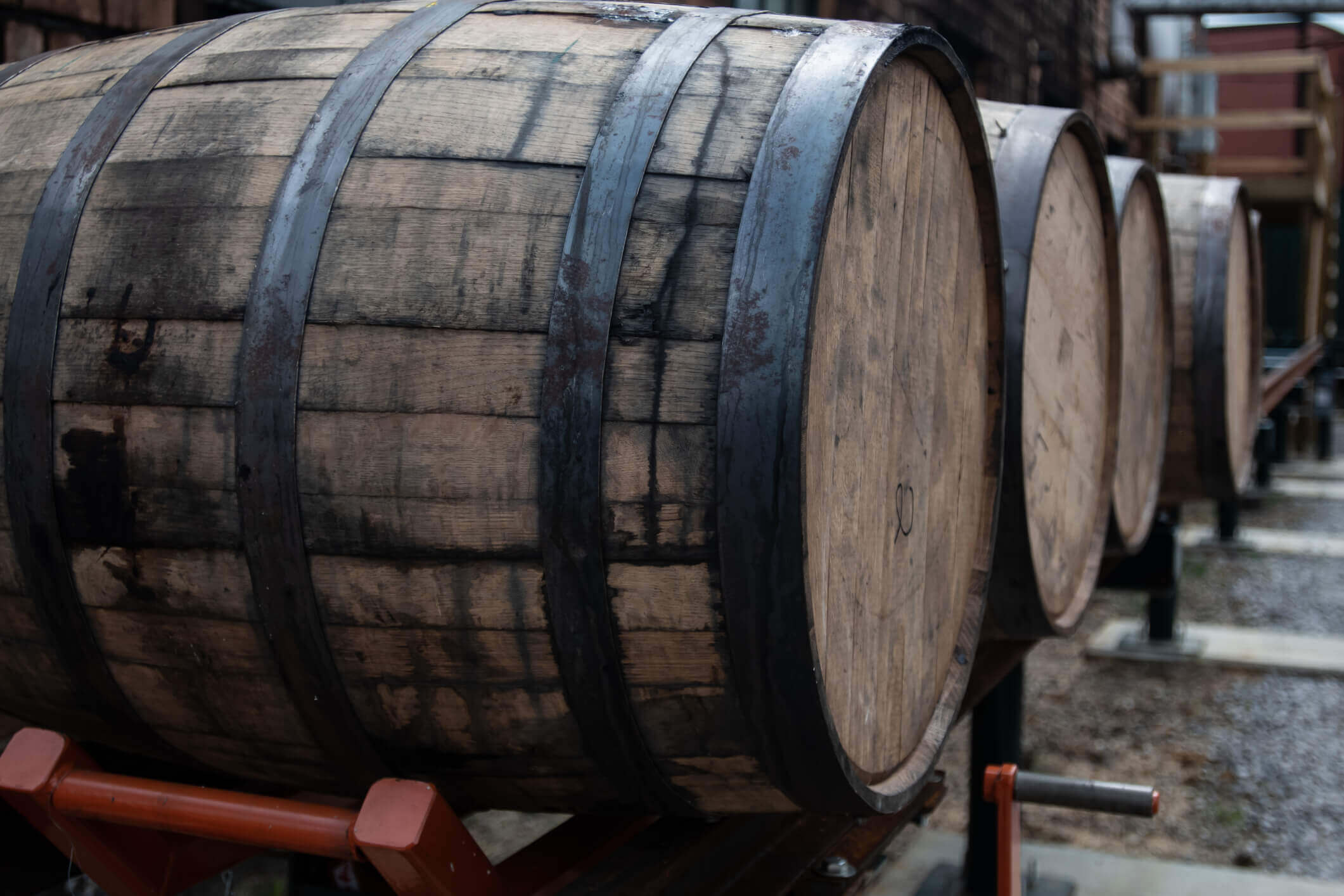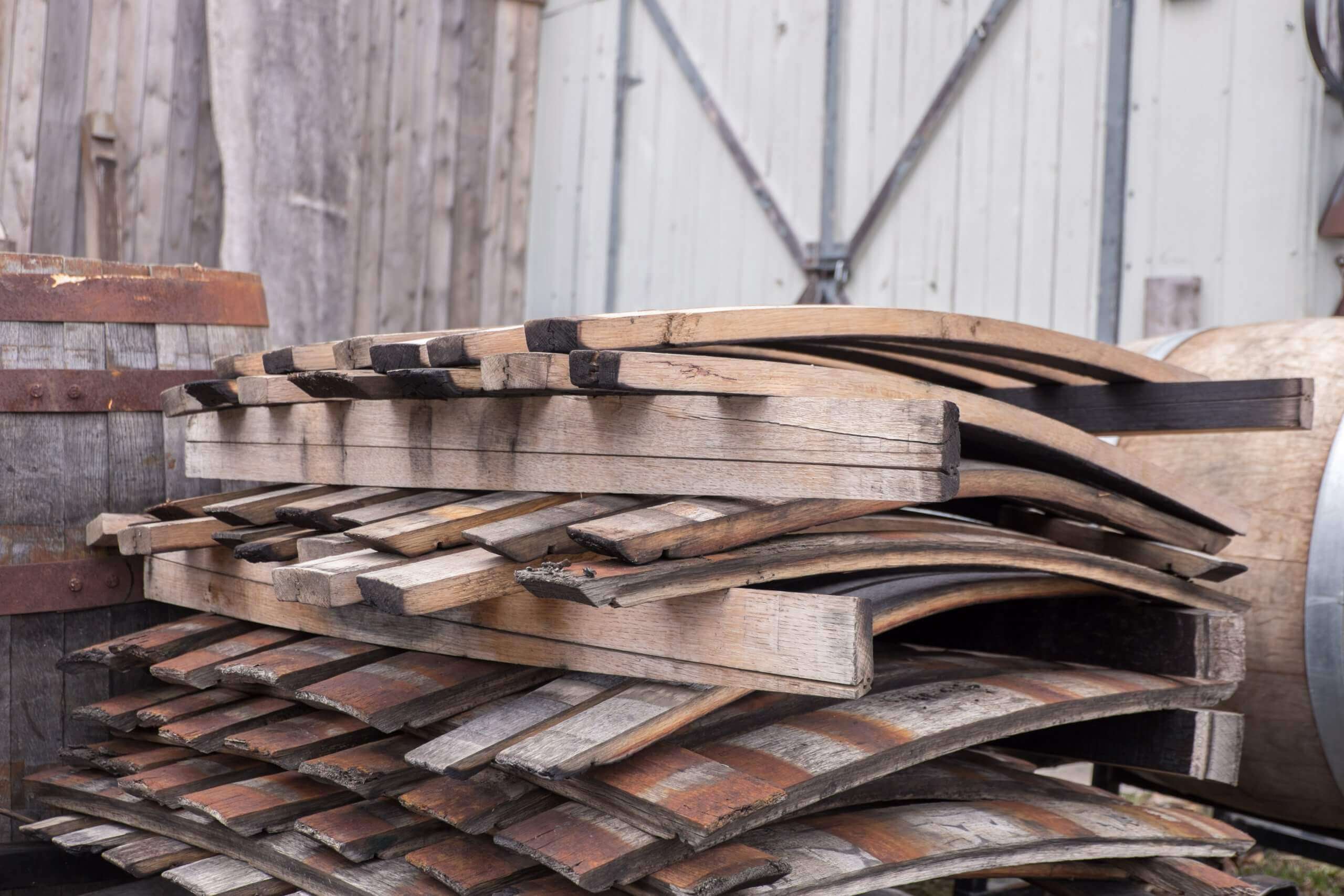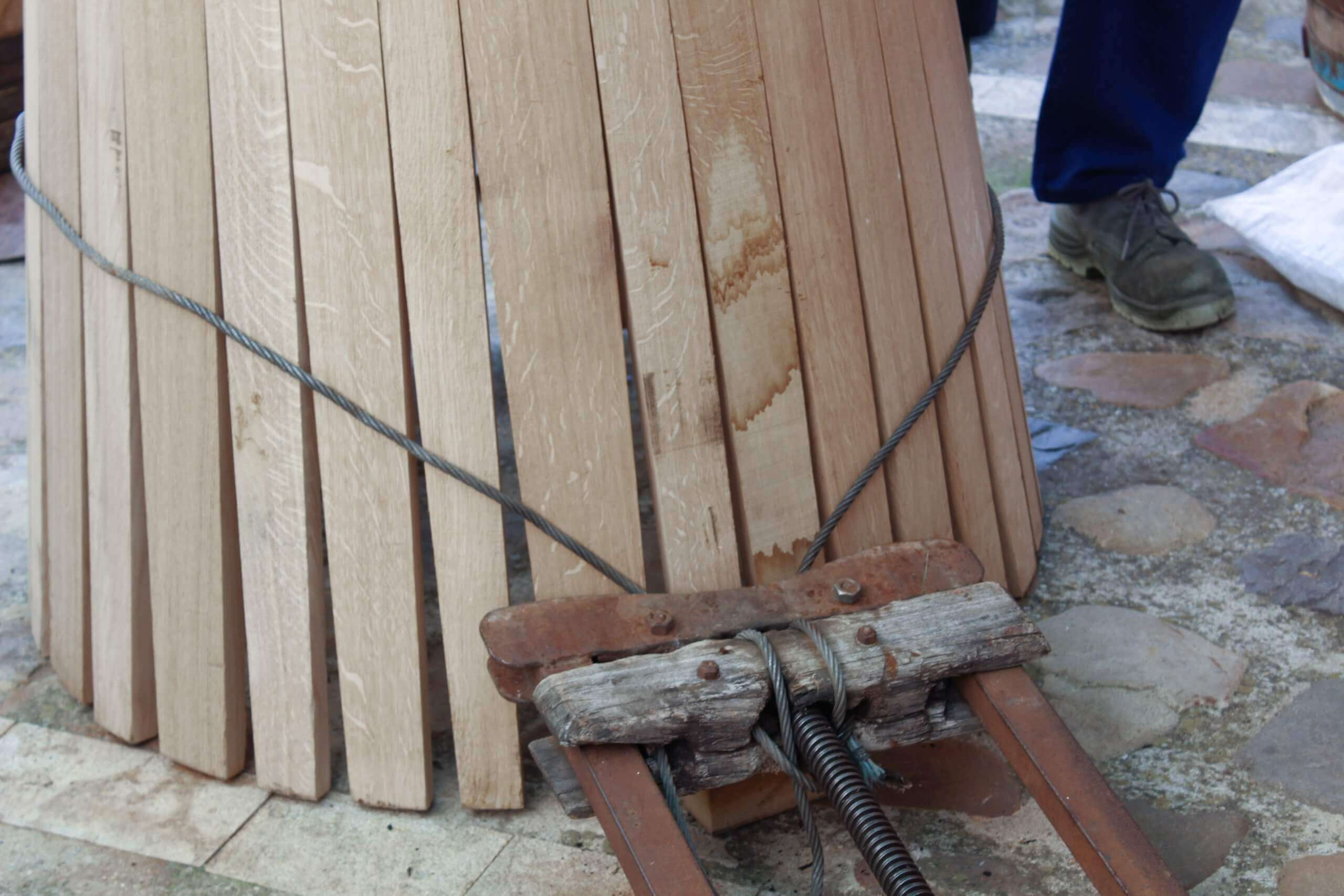Barrels and casks are used in the storage and transportation of liquids. Most often these liquids are beverages for consumption-- wine, beer, and spirits to name a few. The shape of the barrels allows them to be rolled and stored properly when they're full of heavy fluid. The production of these wooden barrels, however, creates constant wood waste that can be shredded and recycled.

Shredding and recycling barrel staves
Information on proper wood waste disposal for cooperages
What is a stave?
Staves are the linear strips of oak that have a specific curved geometry. This shape allows them to be lined up and bound in the classic barrel shape. This specific geometry makes it easy to move and store the heavy, bulky barrels when they're full of liquid. The staves are then held in place by metal hoops at various points to make the vessels sturdy and prevent leaking.
Stave production and wood waste
Producing each stave requires a rip saw that is designed to cut the white oak strips into that specific curved shape. The strips of wood that are ripped off of each side can fall onto a strategically-placed conveyor next to the saw, which will deliver the scrap wood directly into a horizontal wood grinder nearby. This is a hands-off approach to scrap management and can save time and space within a cooperage. This frees up workers to focus on more lucrative tasks than moving bulky wood waste from one side of the plant to another.

Stave production and wood waste
Shredding staves as they're produced adds a real-time solution to a constant wood scrap dilemma.
Inquire about a barrel shredder today
Request a quote
Charring the barrels
Once the barrels have begun to take their shape, the inside of the barrels are treated with open flame and high heat-- a process called "charring." The heat allows the staves to be tightly molded together for a tighter seal.
Each distillery has its own "recipe" for the charring process. This process adds flavor to whatever liquid will be stored inside of the barrel and is the reason whiskey aficionados frequently will converse about the different flavors of (what would appear from the outside to be) very similar drinks. The richness of flavor and the tradition of barrel making is a cultural and time-honored experience both in the United States and around the world.

Making a wooden barrel. Flames burning in oak barrels for firing its inner side in the cooper's workshop
Why white oak?
White oak has waterproof characteristics that make this type of wood ideal for making barrels and casks that will hold liquid for extended periods of time. What's unique about this type of wood is that it also breathes quite well, which is necessary for the distillation process to properly take place.
The life cycle of barrels and casks
We are always thinking in terms of a circular recycling process. Many whiskey distilleries opt to distill their spirits in a single barrel, which means it is never transferred to another barrel or combined with liquor that was distilled in another cask. Many opt to use their barrels only once as part of their flavor profile ("single-barrel whiskey"), and sometimes these casks are sold to vineyards or craft breweries for further use. The flavor left over from the first batch of spirits lends itself well to the flavor profiles of whatever beverage is distilled in it later on.

Wine barrels stacked in the old cellar of the winery.
See it in action!
A horizontal wood grinder is not the only solution. A centrally-located, hopper-fed wood grinder can also be a good option for larger volumes.
Newsletter
Sign-up for our newsletter today.
Sign-up for our newsletter







